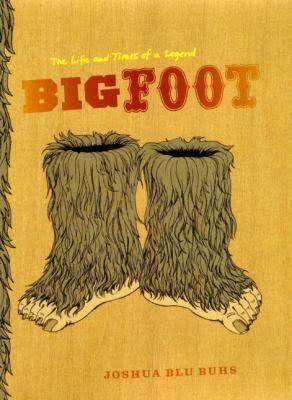7 /10 1 Votes7
Language English Publication date 2009 Pages 304 | 3.5/5 Goodreads Media type hardcover Originally published 2009 Page count 304 | |||||||||||||||||||||||||||||||||
 | ||||||||||||||||||||||||||||||||||
Similar Bigfoot Exposed: An Anthro, Anatomy of a Beast: Obsessio, Bigfoot!: The True Story of A, The Fire Ant Wars: Nature - S | ||||||||||||||||||||||||||||||||||
Bigfoot: The Life and Times of a Legend is a non-fiction book written by Joshua Blu Buhs and published in 2009 by the University of Chicago Press. It explores the history of Bigfoot as myth, discusses the exploits of its believers, as well as hoaxers, and examines the cultural influences that give the legend its staying power.
Contents
Overview
Bigfoot: The Life and Times of a Legend is an exploration of the history of Bigfoot (called Sasquatch in British Columbia), and its counterparts, the Abominable Snowman and Yeti, with a focus on stories from the American Pacific Northwest. Buhs maintains that Bigfoot does not actually inhabit the forests, but, is "real" in the sense that the stories told about the creature are "part of the American cultural landscape".
Buhs contends that Bigfoot is a construct of popular imagination representing a "tradition of the wild man" that "allowed white working-class men" to hold onto traditional, masculine roles while societal changes (feminism and civil rights) in the 1960s and 1970s "challenged their assumptions about society". Although Bigfoot has its roots in European and Asian fairy tales, and sightings of "giant figures with long reddish hair" were reported in the 1920s. Buhs claims Bigfoot stories in men's adventure magazines, like Argosy, True, and Saga, as well as "mockumentary" movies shown in makeshift movie theaters called "four-wallers" in 1970s rural America helped give shape to Bigfoot and secure its place in popular culture. Bigfoot became symbolic of the changes these men feared and way of connection with (or escaping into) the wilderness.
"Truth in these magazines was not about facts or correspondence with reality but resisting changing values and valorizing an older tradition".
Buhs provides a historical accounting of Bigfoot encounters, including purported sightings and abductions. He surveys the physical evidence collected and photographed (footprints, tufts of fur, droppings), and introduces readers to such devotees of Bigfoot as Rene Dahinden, Roger Patterson, Ray Wallace, John Napier, Albert Ostman, P.T. Barnum, Grover Krantz, Ivan Sanderson, and others who researched, looked for, and, in some cases, faked Bigfoot sightings or exploited the idea of Bigfoot for their own gain.
Buhs also outlines how the commercialization of Bigfoot, through the sale of commercial products (B-movies, T-shirts, TV shows, whiskey advertisements), transformed Bigfoot, once feared, into a creature to be ridiculed. Environmentalism, Buhs posits, changed Bigfoot into a gentle giant. By the mid-1970s, Bigfoot research had dissolved into "exposed hoaxes, arrogant and premature proclamations of conclusive evidence, and vindictive infighting."
Reception
Reviewers of Bigfoot: The Life and Times of a Legend found the book, overall, to be an entertaining account of Bigfoot that lead to "interesting places".
Buhs' attempt at telling an historical account of an imaginary creature, for some reviewers, was problematic. Jennifer Attebury argued that although Buhs used "excellent secondary sources" and solid primary sources, the exploration of Bigfoot might better be described as "fakelore." She suggested that the book might have benefited from theoretical frameworks provided by contemporary folklore scholarship.
Still other reviewers found Buhs' characterization of Bigfoot as reflecting the hopes, fears and desires of white working-class men "a bit of a stretch". Paul Lucier wrote in his review, "Buhs is sympathetic to the Bigfooters, and he tries to restrain any prejudgments, but in the end he cannot help but explode each incident and, perhaps unintentionally, show up the Bigfooters as either fools or frauds". In his review, Benjamin Radford wrote that Buhs characterized skeptics as "routinely ridiculing" the subject of Bigfoot, and suggested that prominent skeptical Bigfoot researchers, like Michael Dennett, treated the subject and its claimants with respect.
Some members of the Bigfoot community received the book less than enthusiastically, claiming it as a literary fraud.
About the author
Buhs is an American scholar and writer. He earned a PhD in the history and sociology of science from the University of Pennsylvania. Though skeptical about the existence of Bigfoot, he was initially interested in how the legend might reflect Americans' views of and relationship with nature. "Here was a creature ... that embodied various ideas about the natural world ... but didn't exist." He decided to write a book about Bigfoot in an attempt to better understand the creature's complex cultural and historical origins. "... Bigfoot that is, as one book put it, America's #1 monster. It's the monster that we all know about."
Buhs also wrote The Fire Ant Wars.
